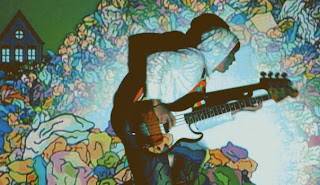Such a simple and powerful documentary, backed by the most sincere stories. What I Want My Words to Do to You is a project of Eve Ensler conducting a writing seminar at a maximum security prison, offering the prison mates a chance to write about their experience, their regrets, their hopes and dreams and share it with one another. The project itself is simple and extremely profound, and the filming is just kept simple to let the individuals speak for themselves.
The most critial role Eve Ensler played as a fascilitator of the project is creating a space where sharing the most volunrable matter and being pushed to dig deeper into one's life and the moment of mistake that brought them to this prison of life are sacred. Ensler said, "No one can judge you, that's the rule of the group." And it is true, no one, including Ensler, can judge these most private, fragile and authentic moments of confession. Ensler's success is simply gainning the trust of the prison mates to lead them on this journey of exploration through writing. Without embelishments, the honest words are the extremely powerful. Meanwhile, Ensler is also excellent at providing thought-provoking prompts as a fascilitator:
"Think of a question someone has asked you that you've never answered. Answer it."
"Write a letter to someone you love. Tell them why you're in prison."
"Rewrite the letter you wrote explaining why you're in prison. Go deeper."
"Describe an experience in prison when someone surprised you with kindness."
The most compelling story for me was the story a lady wrote while pretending to be her own daughter writing to her. What a heavy heart is behind those words and I felt is so closely to my own experience with my father. This movie also echoes my experience working on StoryTime, especially. The power of honest, personal stories creates a healing process for all the individuals.
It is also brilliant that Ensler was able to find actresses to bring life to the writings and for the writers to see their words take flight and empowers other individuals. The spoken words are so powerful that even now as I am writing this blog, sentences are still echoing in my head.
"I want my words to make my past go away." How powerful an experience it must have been for the prison community. Through the show, Ensler gave the work and the applaud back to the ladies. It is never a project about Ensler, but a project about the prison mates. And I think this was definetly a mutual and appreciated understanding among the writers in the seminar.
By the end of the movies, the crimes labling the ladies that are spelled out through the introductary phrase, don't even bother me anymore. It confirms one of my favorite quotes by Henry Longfellow, "If we could read the secret history of our enemies, we should find in each man's life sorrow and suffering enough to disarm all hostility."
 Hello,
Hello,
